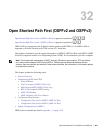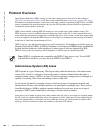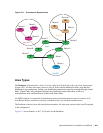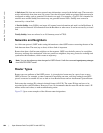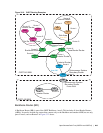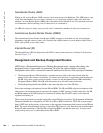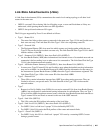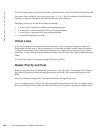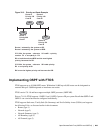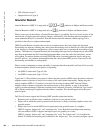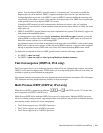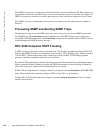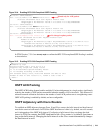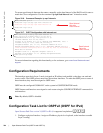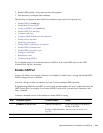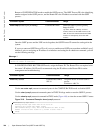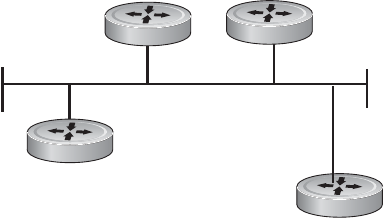
Open Shortest Path First (OSPFv2 and OSPFv3) | 699
Figure 32-3. Priority and Costs Example
Implementing OSPF with FTOS
FTOS supports up to 10,000 OSPF routes. Within that 10,000 up to 8,000 routes can be designated as
external and up to 2,000 designated as inter/intra area routes.
FTOS version 7.8.1.0 and later support multiple OSPF processes (OSPF MP).
Prior to 7.8.1.0, FTOS supports 1 OSPFv2 and 1 OSPFv3 process ID per system. Recall that OSPFv2 and
OSPFv3 can coexist but must be configured individually.
FTOS supports Stub areas, Totally Stub (No Summary) and Not So Stubby Areas (NSSAs) and supports
the following LSAs, as discussed earlier in this document.
• Router (type 1)
• Network (type 2)
• Network Summary (type 3)
• AS Boundary (type 4)
• AS External (type 5)
Router 1
Priority 200
Cost 21
Router 2
Priority 180
Cost 50
Router 3
Priority 100
Cost 25
Router 4
Priority 150
Cost 20
Router 1 selected by the system as DR.
Router 2 selected by the system as BDR.
If R1 fails, the system subtracts 21 from R1s priority
number. R1s new priority is 179.
R2 as both the selected BDR and the now-highest
priority, becomes the DR.
If R3 fails, the system subtracts 50 from its priority.
R2s new priority is 130.
R4 is now the highest priority and becomes the DR.



